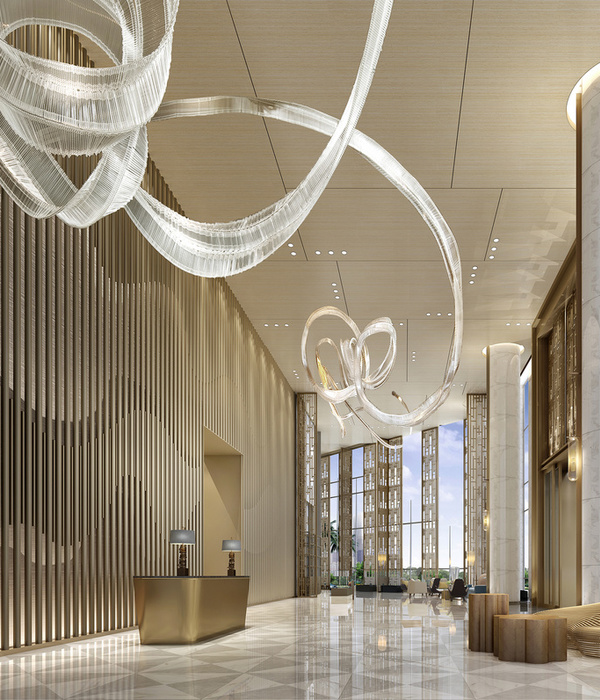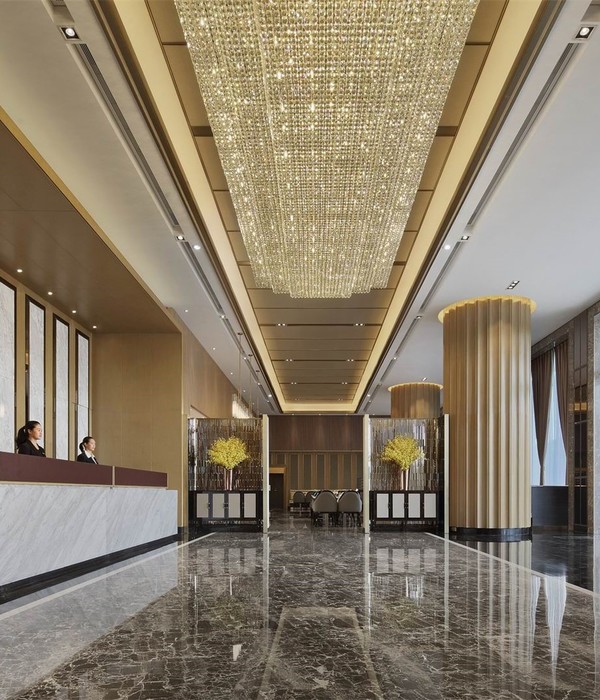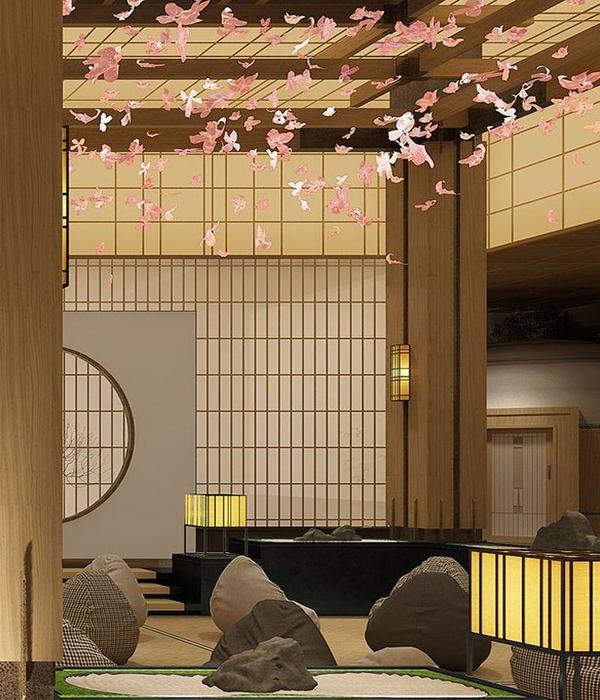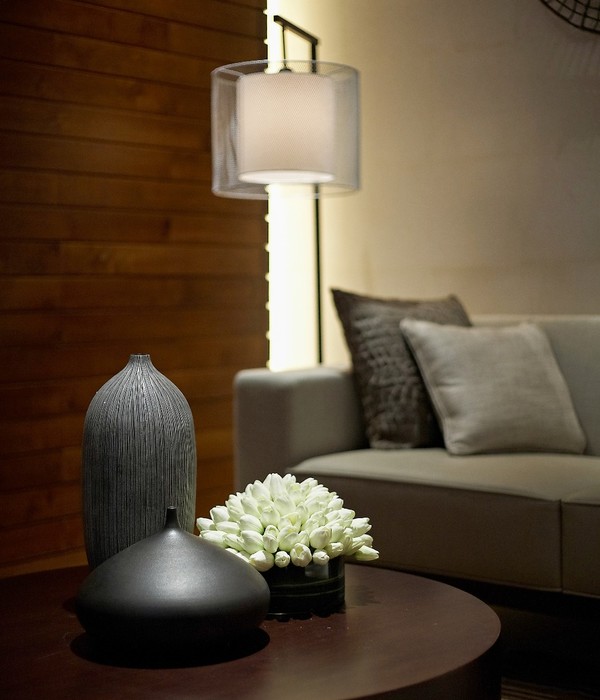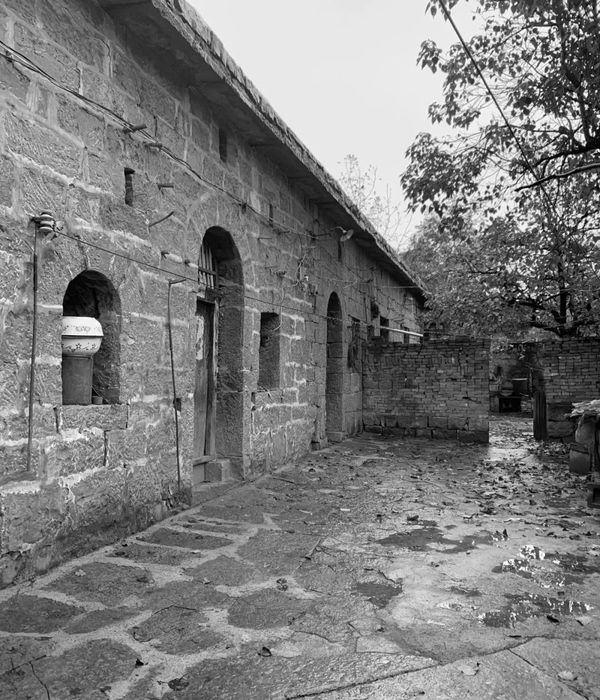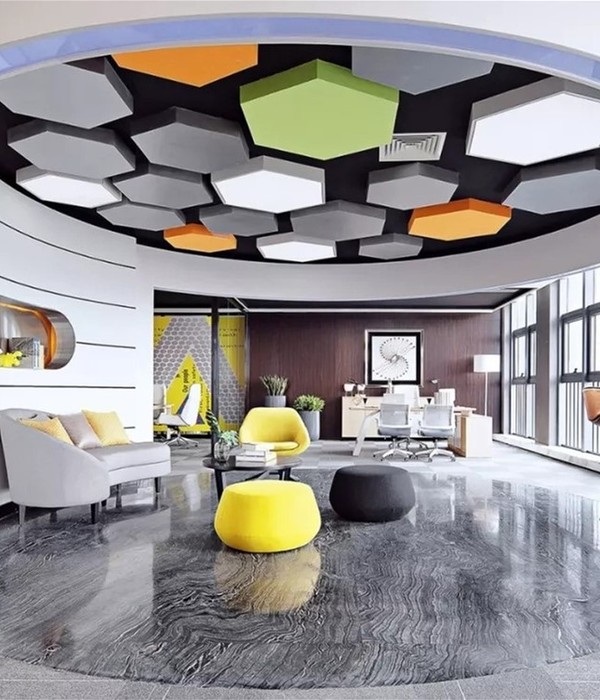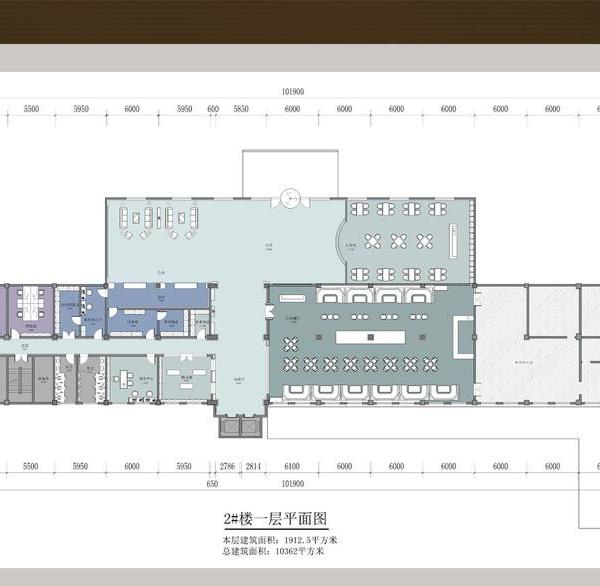奥伯林酒店 | 绿色艺术区的生态地标
盖提斯集团室内设计公司。环境工程师 TranssolarKilma 工程结构 Halvorson and Partners 公司。MEP IMEG 公司景观与民用内夫
Interior Design The Gettys Group, Inc.
Environmental Engineer Transsolar Kilma Engineering
Structural Halvorson And Partners, Inc.
Mep Imeg Corp.
Landscape And Civil Neff & Associates
Art Installation And Landscape Design Maya Lin Studio
Contractor Am Higley
More Specs Less Specs
© Brad Feinknopf
布拉德·费因克诺普夫
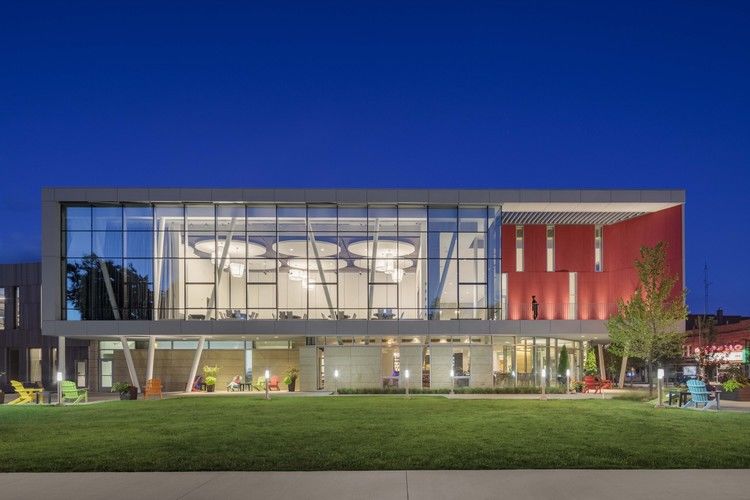
架构师提供的文本描述。奥伯林酒店是彼得刘易斯网关中心 (PeterB.Lewis Gateway Center) 的主要项目元素,这是一座 104,000 平方英尺的混合用途建筑,它重新设想了校园酒店的类型,创造了一个将城市和学院结合在一起的焦点。高科技和高度可持续的中心视觉标志着绿色艺术区的技术和生态进步性质。
Text description provided by the architects. The Hotel at Oberlin is the major program element of the Peter B. Lewis Gateway Center, a 104,000-square-foot mixed-use building that reimagines the campus hotel typology to create a focal point that unites the city and the college. The high-tech and highly sustainable center visually signals the technologically and ecologically progressive nature of the Green Arts District.
© Brad Feinknopf
布拉德·费因克诺普夫
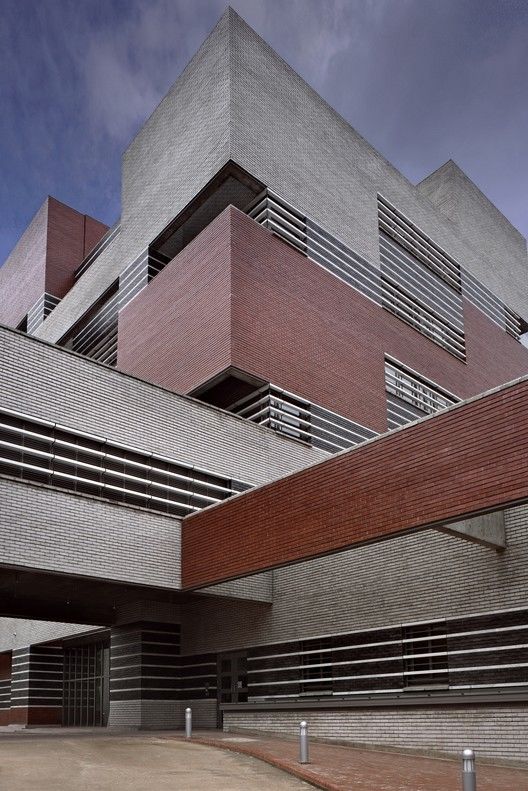
通过可持续战略和技术的开创性组合,它有望成为 LEED 白金认证-- 这是该国实现这一标准的第五个新的接待项目。根据能源使用强度来衡量,这座建筑将在北美商业建筑中名列前茅,使用的能源将比可比建筑少 55%。
Through a groundbreaking mix of sustainable strategies and technologies, it is on track to become LEED Platinum certified—just the fifth new hospitality project in the country to achieve this standard. As measured by Energy Use Intensity, the building will be within the top ranking of commercial structures in North America, using 55 percent less energy than comparable buildings.
© Brad Feinknopf
布拉德·费因克诺普夫
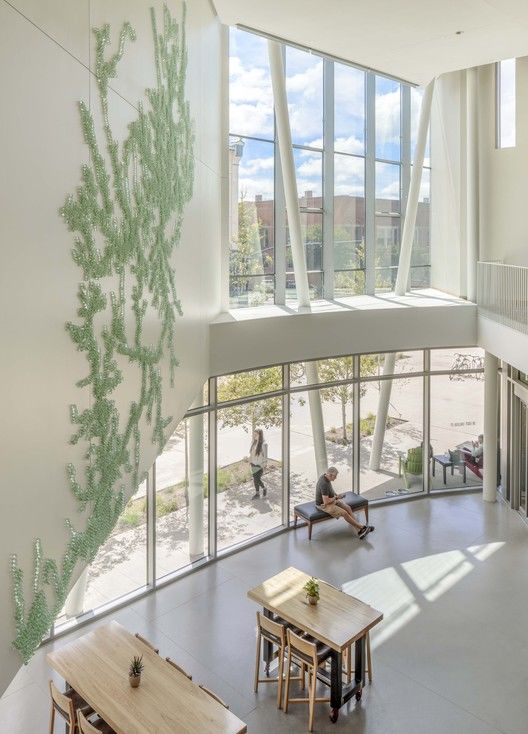
由所罗门科德韦尔布恩茨 (SCB) 与跨太阳能气候工程师合作设计,网关中心是一个高性能的建筑设计和整个系统的思考模式。
Designed by Solomon Cordwell Buenz (SCB) in collaboration with Transsolar Climate Engineers, the Gateway Center is a model for high performance building design and whole-systems thinking.
酒店不使用传统的冷热空气调节系统来调节周围的空气温度,而是采用辐射供暖和冷却系统。这是国内第一家使用这种被动系统的酒店,该系统依靠建筑物内的表面温度来加热和冷却室内空间。每个客房都有一个辐射式天花板面板和一个吊扇,通过在面板上移动空气来帮助提高系统的冷却性能。
Rather than use a traditional air conditioning system that circulates hot or cold air to regulate the ambient air temperature, the hotel utilizes a radiant heating and cooling system. It is the first hotel in the country to utilize this passive system, which relies on surface temperatures within the building to heat and cool interior spaces. Each guest room contains a radiant ceiling panel and a ceiling fan, which helps increase the cooling performance of the system by moving air across the panel.
Sustainability Diagram
可持续性图
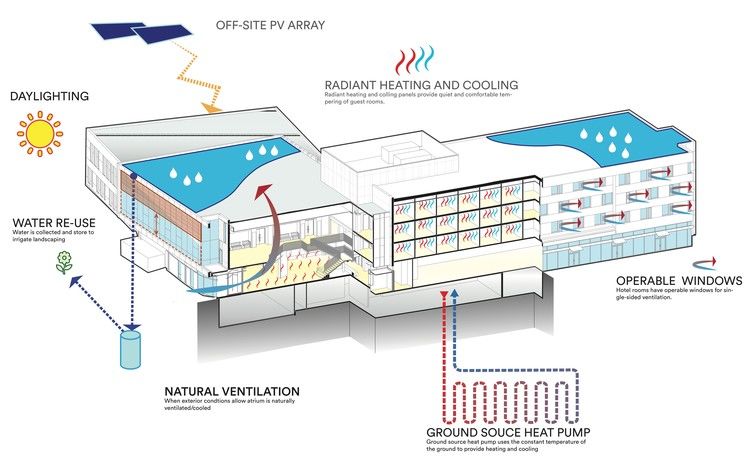
辐射加热和冷却系统由一个由 48 405 英尺深的井组成的地热场支撑。光伏电池板补充了酒店的电力生产。奥伯林的校园内 10 英亩,2.27 兆瓦的太阳能阵列每年能产生大约 300 万千瓦的电力。雨水被收集并用于景观灌溉,而现场生物保留盆地则缓慢过滤雨水。一种高性能的立面和外部自动太阳能遮阳装置降低了热量。
The radiant heating and cooling system is supported by a geothermal field composed of 48 405-foot-deep wells. Photovoltaic panels supplement power production for the hotel. Oberlin’s on-campus ten-acre, 2.27-megawatt solar array can generate approximately three million kilowatts of electricity annually. Rainwater is harvested and used for landscape irrigation, while on-site bio-retention basins slowly filter storm water. A high-performance facade and exterior automatic solar shading devices reduce heat gain. © Brad Feinknopf
布拉德·费因克诺普夫
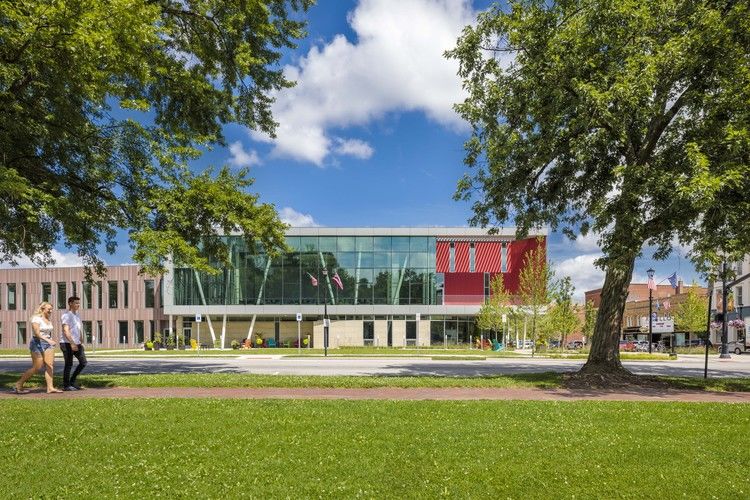
该项目的室内设计采用天然、回收或回收材料,并从离奥伯林 500 英里的地方采购了 50% 的建筑材料。只要有可能,使用低挥发性有机化合物 (VOC) 的材料就会被指定,以最大限度地减少脱气和改善室内空气质量。
The interior design for the project uses natural, salvaged, or recycled materials and sourced 50% of building materials from within 500 miles from Oberlin. Whenever possible, materials with low volatile organic compounds (VOC) were specified to minimize off-gassing and improve interior air quality.
Ground Floor - Second Floor
一楼-- 二楼

作为绿色艺术区的一部分,艺术显然将在该项目的设计中发挥重要作用。位于华盛顿特区的越南退伍军人纪念馆的设计师、俄亥俄州土著玛雅·林 (MayaLin) 创建了一个名为“生态底座:三部分景观”的三部分设施,横跨酒店的大堂和地面。
As part of the Green Arts District, art was obviously to play a major role in the project’s design. Ohio native Maya Lin, designer of the Vietnam Veterans Memorial in Washington, D.C., created a three-part installation called “An Ecological Primer: A Landscape in 3 Parts” that spans the hotel’s lobby and grounds. © Brad Feinknopf
布拉德·费因克诺普夫
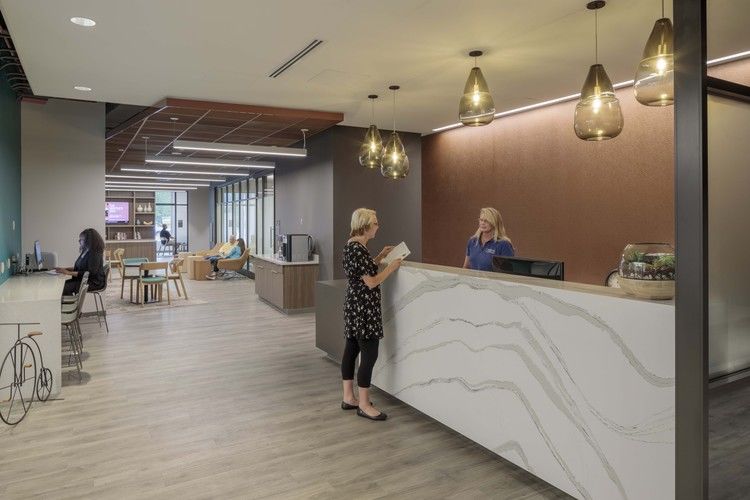
奥伯林酒店采取积极主动的方式教育客人如何影响建筑性能和参与保护措施。客房配有指示灯,显示何时室外条件适合打开窗户。当窗户打开时,传感器会自动关闭辐射板和通风系统。教育标志和显示能源消耗数据的信息亭以一种易于理解的方式呈现,使可持续性教育成为客人体验的一部分。
The Hotel at Oberlin takes a proactive approach to educating guests on how they can impact building performance and participate in conservation measures. Guest rooms are fitted with indicator lights that show when outdoor conditions are suitable for opening the windows. When the windows are open, sensors automatically shut off the radiant panels and ventilation system. Educational signage and an information kiosk that displays energy consumption data are presented in an easy-to-understand manner, making sustainability education part of the guest experience. © Brad Feinknopf
布拉德·费因克诺普夫

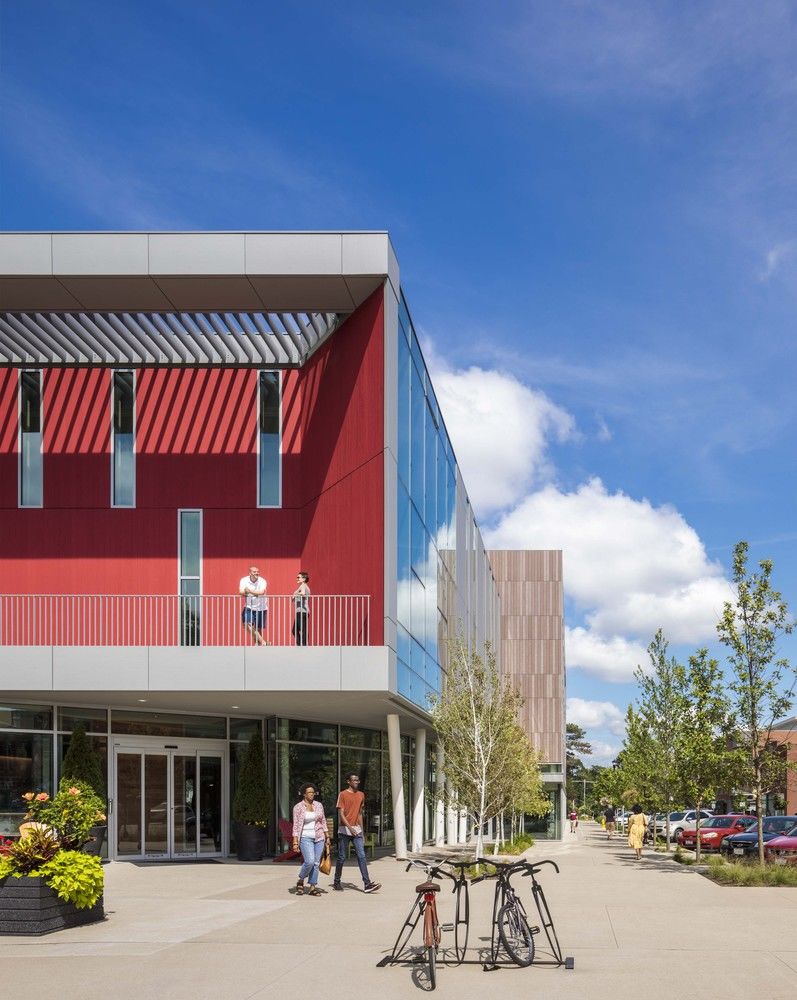
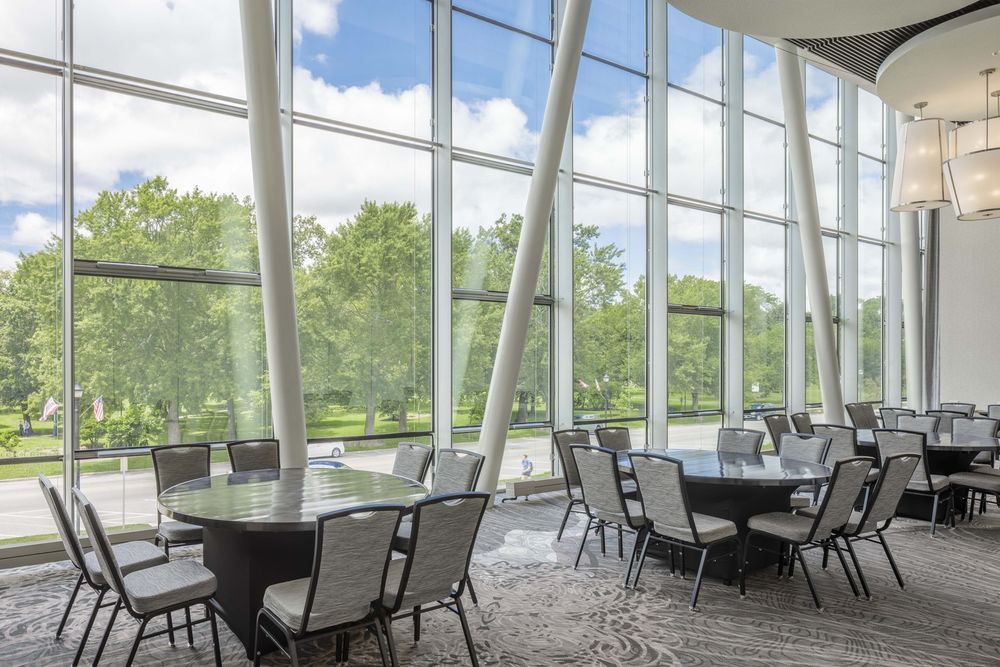
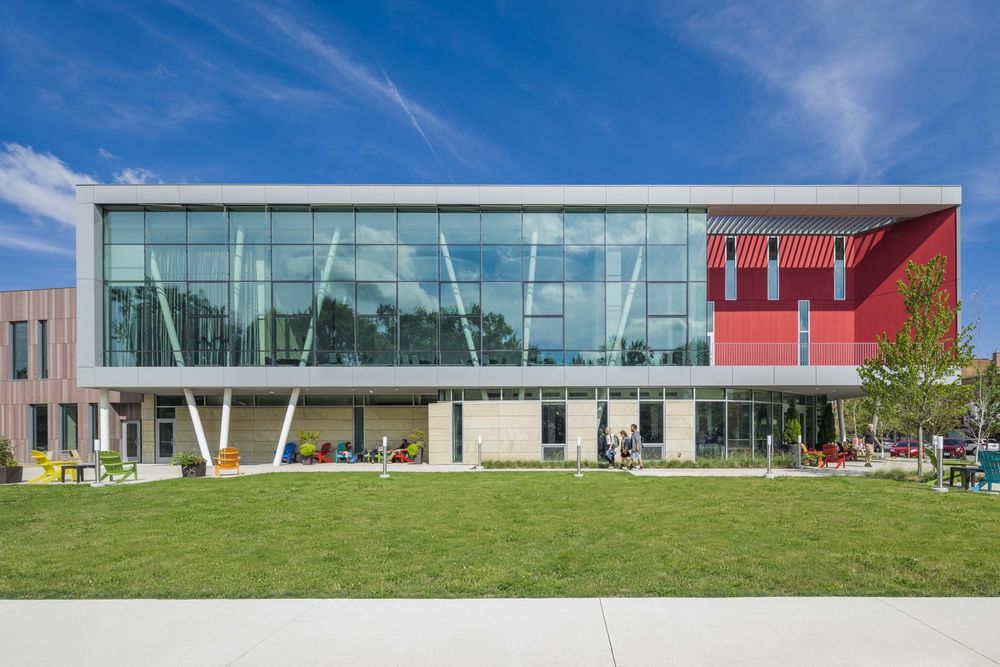
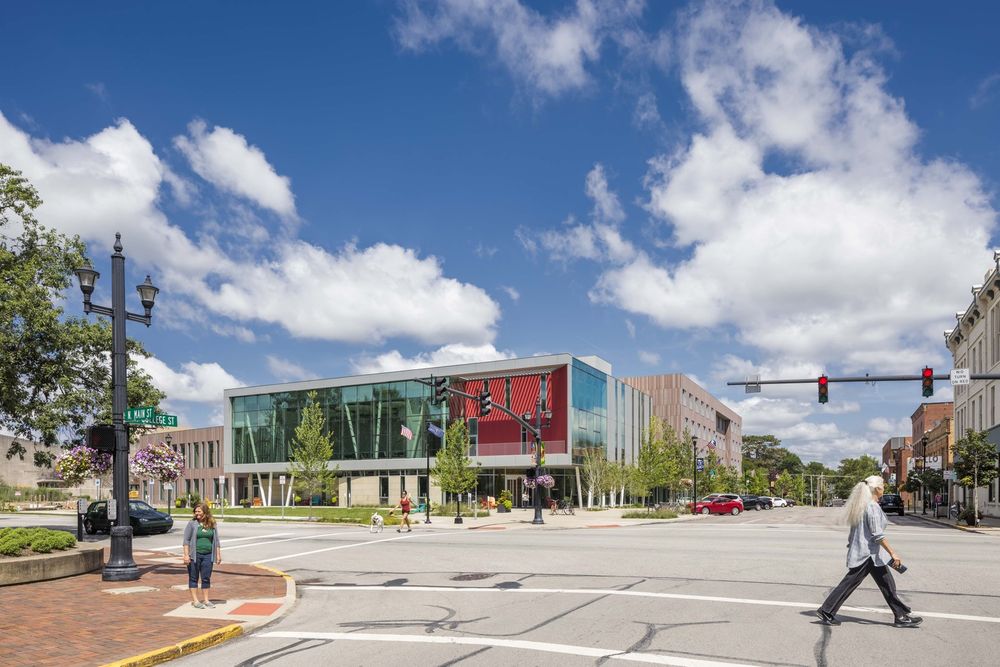
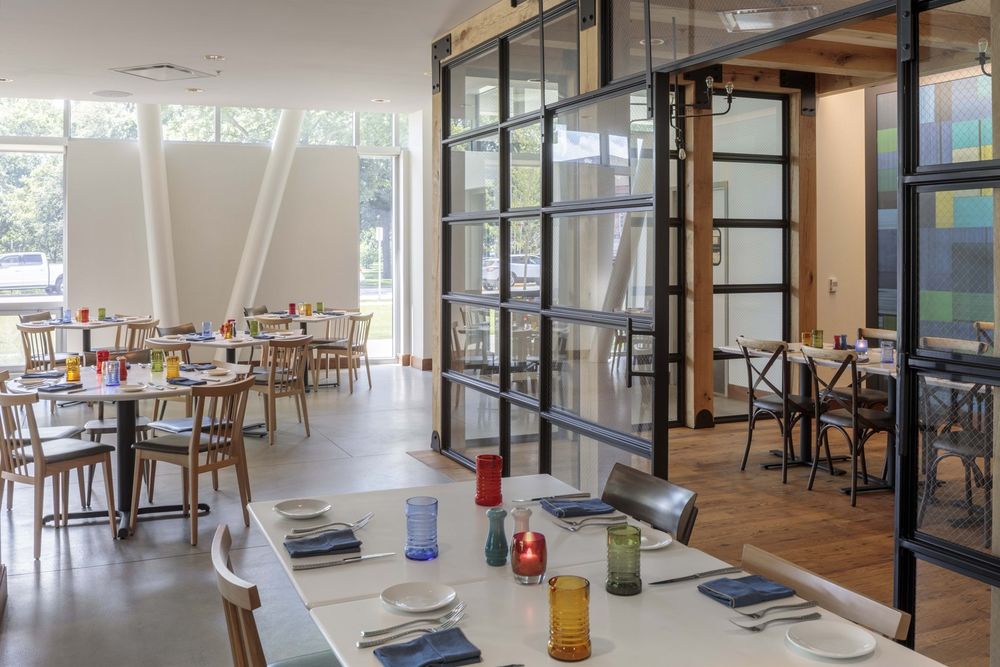
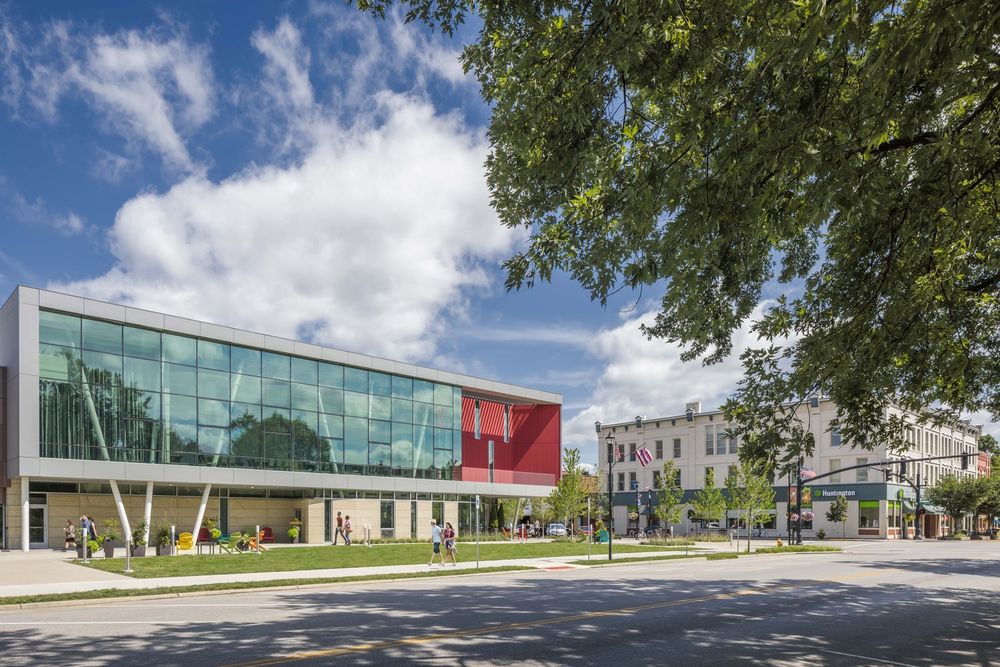
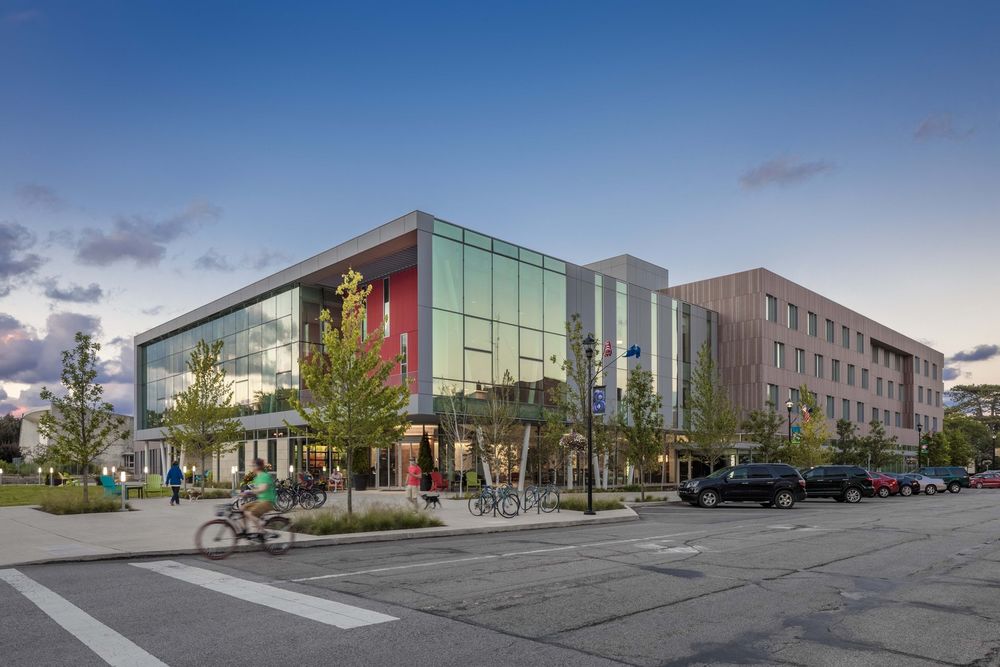

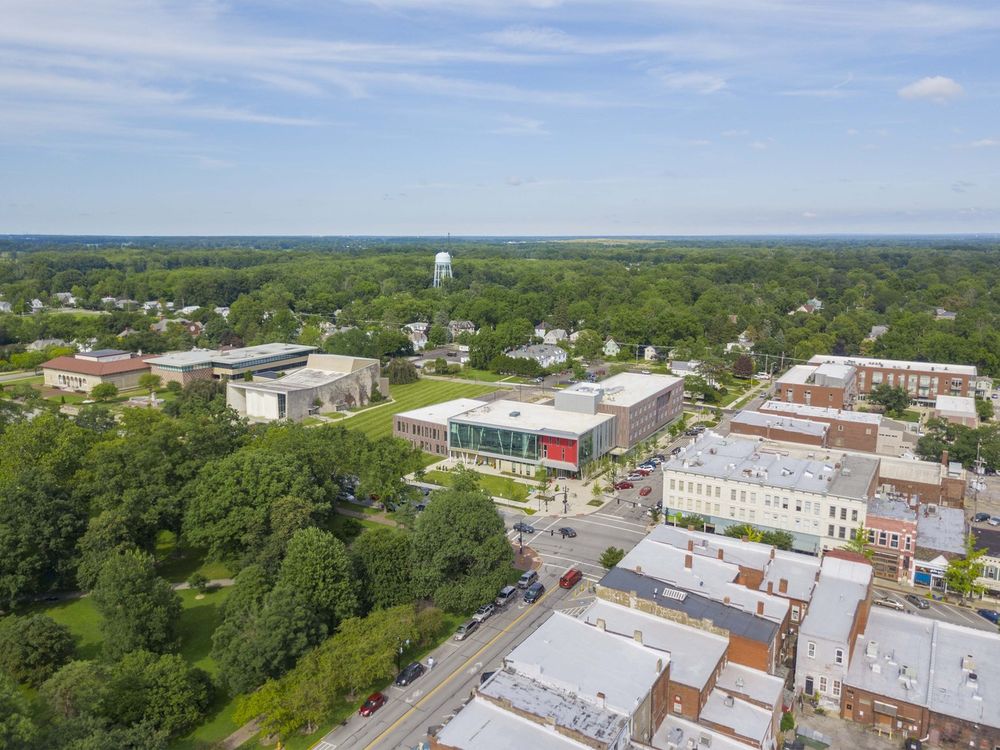
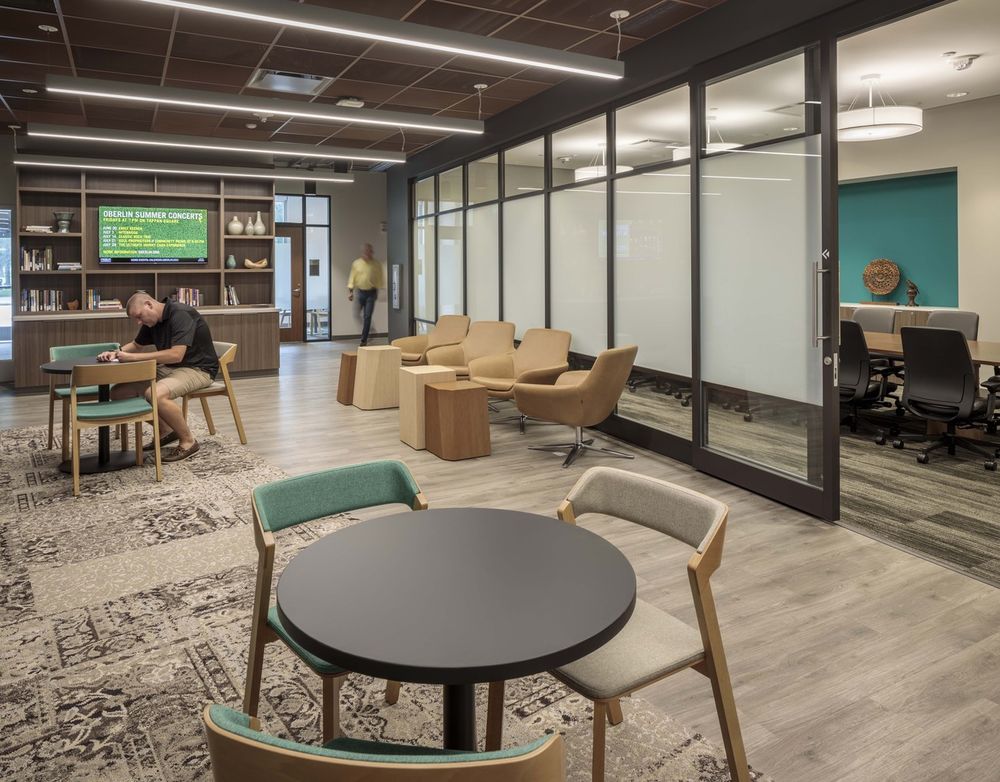
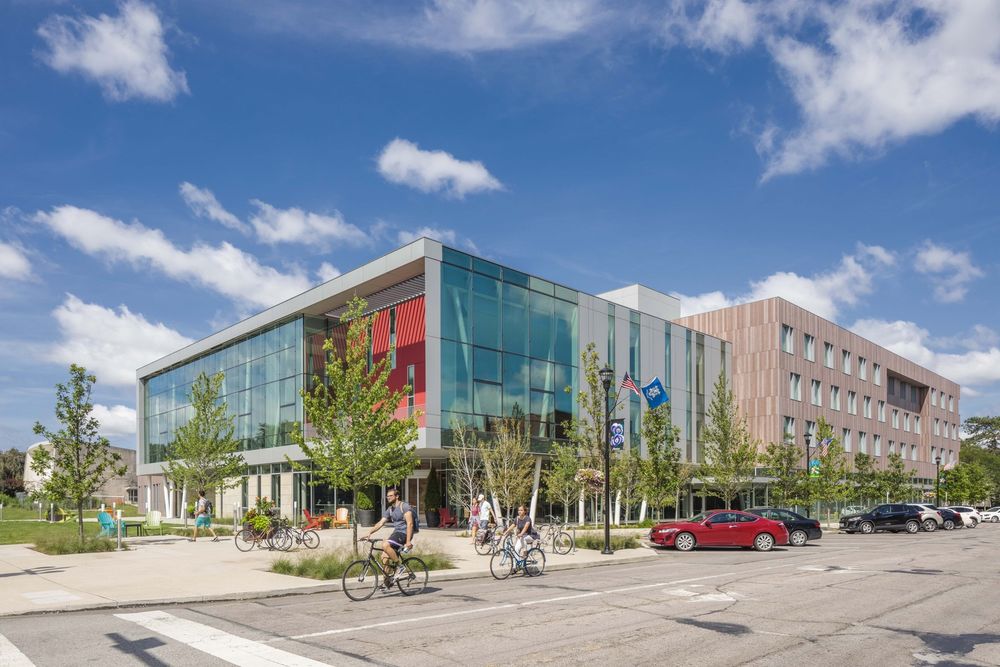
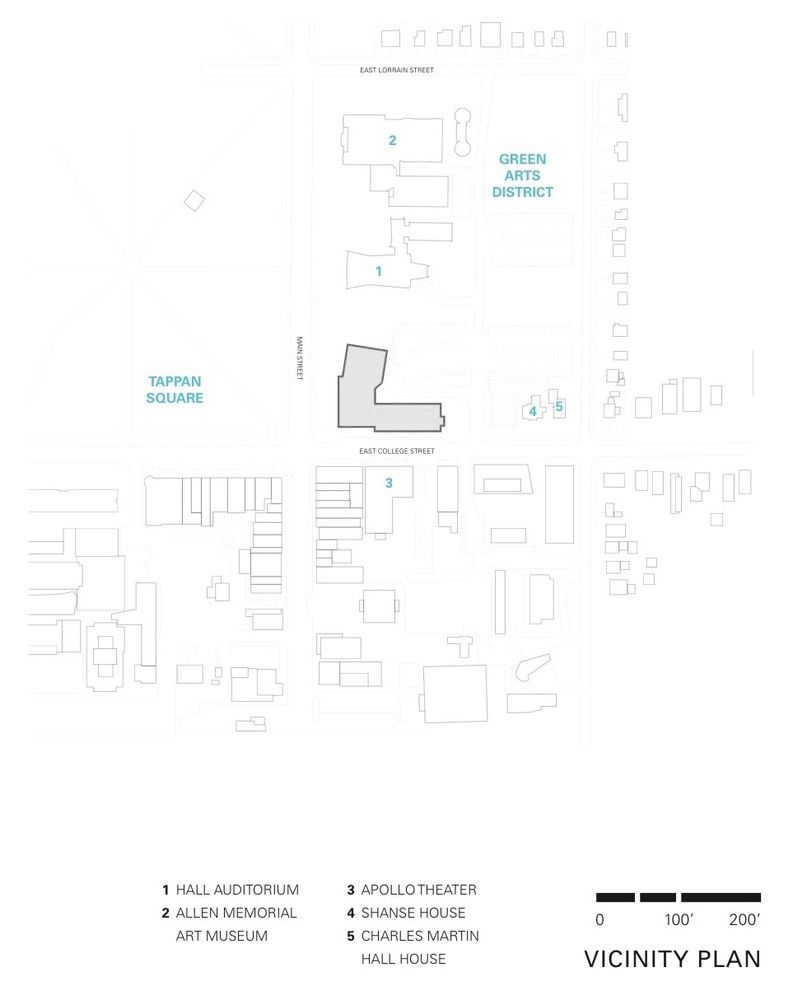

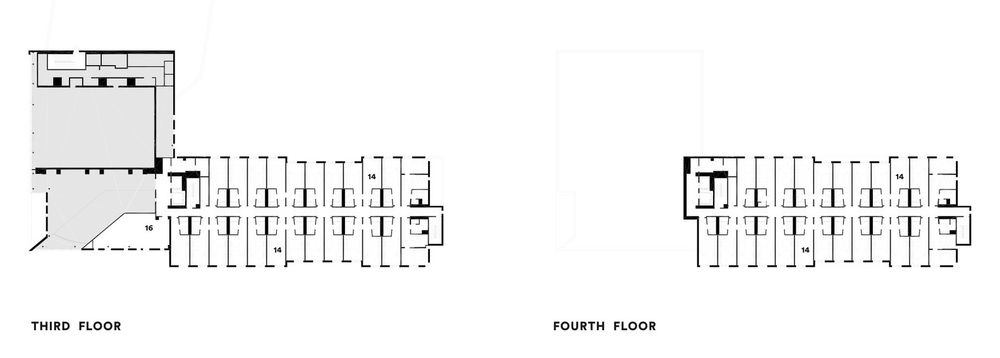
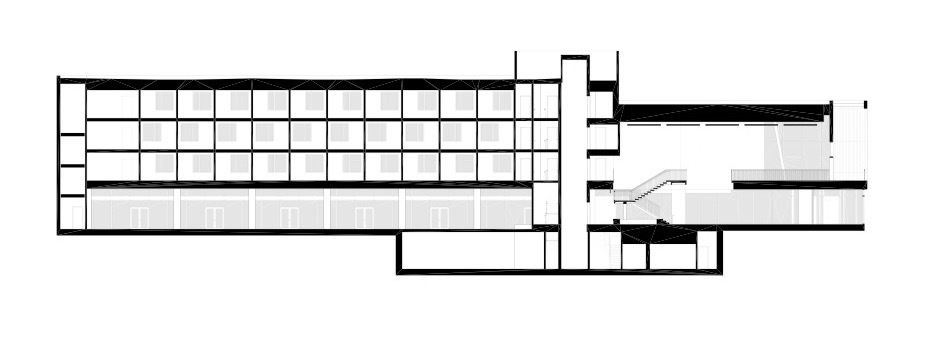
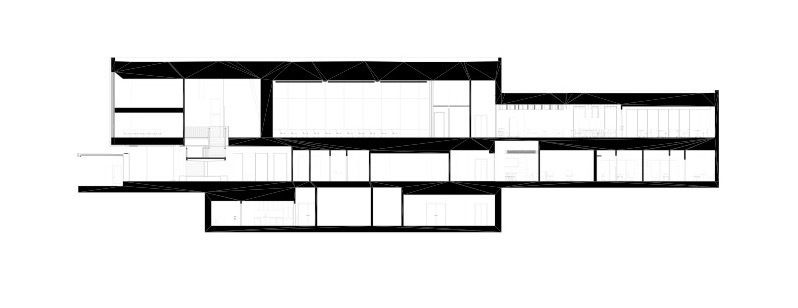
Architects Solomon Cordwell Buenz
Location Oberlin, Ohio, United States
Lead Architects SCB
Area 51152.0 ft2Project Year 2016
Photographs Brad Feinknopf


